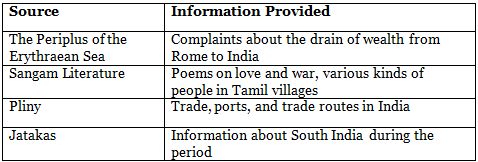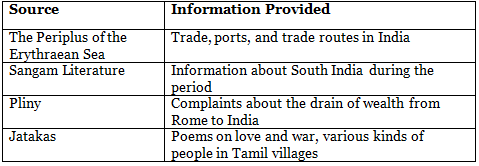Worksheet Solutions: Life in Towns and Villages | Footprints Class 6: Book Solutions, Notes & Worksheets PDF Download
Q1: Multiple Choice Questions (MCQs)
(i) What is the Second Urbanisation in ancient India?
(a) The rise of villages
(b) The decline of towns
(c) The transition from village to town or city life
(d) The establishment of the Mauryan Empire
Ans: (c)
The Second Urbanisation refers to the change from village to town or city life in ancient India.
(ii) Which town was the capital of the Vajjis during the Second Urbanisation?
(a) Rajagriha
(b) Pataliputra
(c) Vaishali
(d) Mathura
Ans: (c)
Vaishali was the capital of the Vajjis during the Second Urbanisation.
(iii) What was the significance of iron tools during the Second Urbanisation?
(a) They were used for artistic purposes
(b) They helped clear deep forests, expanding cultivation
(c) They were used primarily for defense
(d) They had no significant impact
Ans: (b)
The use of iron tools during this period allowed for clearing deep forests, leading to increased cultivation.
(iv) What were the two kinds of guilds during the Second Urbanisation?
(a) Merchant and warrior
(b) Craft and religious
(c) Political and social
(d) Merchant and craft
Ans: (d)
Guilds during the Second Urbanisation were divided into merchant guilds and craft guilds.
(v) What were some major imports during the period of flourishing trade?
(a) Cotton, wool, and silk cloth
(b) Wine, copper, tin, and lead
(c) Spices, essences, and oils
(d) All of the above
Ans: (d)
The major imports included a variety of goods such as wine, metals, and textile products.
Q2: Fill in the Blanks
(i) The village headman in North Indian villages was known as ____________.
Ans: grama bhojaka or gramika
(ii) Farmers who did not own land and worked on the fields of big landowners were called ____________.
Ans: dasas and karmakaras
(iii) Cattle grazers and herders in villages were known as ____________.
Ans: gopalakas
(iv) Besides the grama bhojaka, there were other farmers in the village known as ____________.
Ans: grihapatis or gahapatis
(v) The largest landowner in a North Indian village often collected taxes and was known as ____________.
Ans: grama bhojaka or gramika
Q3: Match the Column (In a Table)
 Ans:
Ans:
Q4: True/False Statements
(i) Kaveripattinam was a port city during the rule of the Cholas, Pandyas, and Cheras.
Ans: True
Kaveripattinam was indeed a port city during this period.
(ii) The rulers of Tamilakam encouraged only internal trade, neglecting overseas trade.
Ans: False
The rulers encouraged both internal and overseas trade in Tamilakam.
(iii) Roman settlements were found in various trading centers, including Arikamedu.
Ans: True
Roman settlements, including Arikamedu, have been discovered in many trading centers.
(iv) Lead, in the shape of coiled strips, was exported from India to Rome.
Ans: False
Lead, in the shape of coiled strips, seems to have been imported from Rome.
(v) The city of Puhar or Kaveripattinam had a living area and a harbor area.
Ans: True
The city was divided into two areas - living and harbor - as described in the Tamil epic Silappadikaram.
|
65 videos|127 docs|25 tests
|
FAQs on Worksheet Solutions: Life in Towns and Villages - Footprints Class 6: Book Solutions, Notes & Worksheets
| 1. What are the advantages of living in a town or village? |  |
| 2. Are there any disadvantages of living in a town or village? |  |
| 3. What are some common challenges faced by towns and villages? |  |
| 4. How can towns and villages promote tourism? |  |
| 5. What are some measures to improve the quality of life in towns and villages? |  |





















